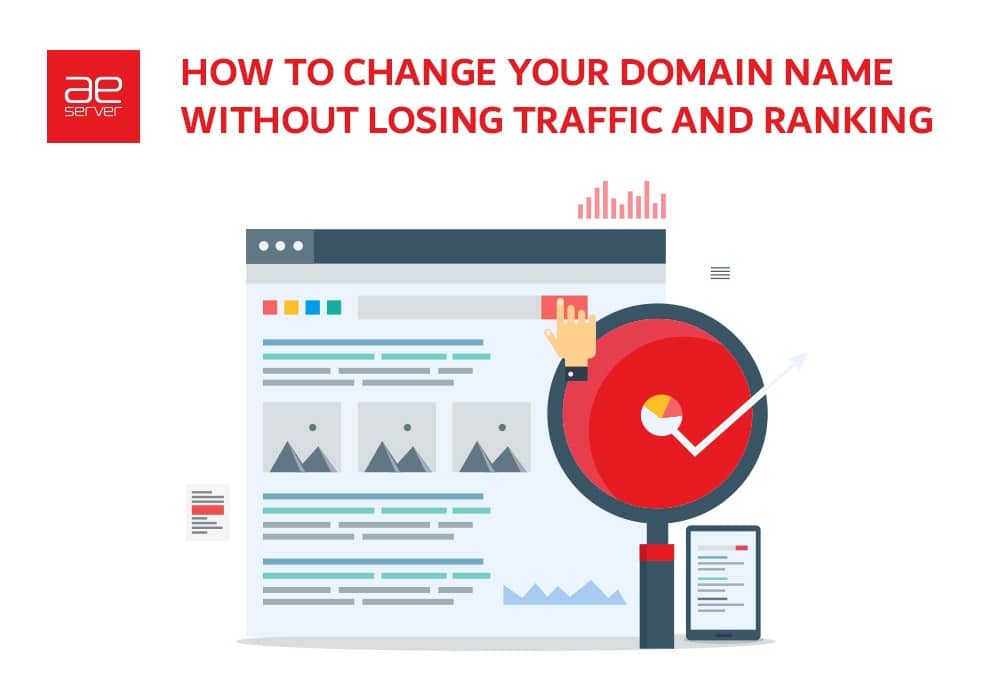
Tips to Make Your Website Load Faster
The modern world and the Internet have long gone beyond just educational content. Many people spend most of their time on the Internet. Users are becoming more and more demanding of every site. What was relevant a couple of years ago is now completely unused by people. And, while people used to be willing to wait minutes for the Internet to load, now that doesn’t work. Every user is looking for a website where the owner provides fast loading.
Users demand instant access to information. Therefore, the loading speed of your site can have a big impact on your success. If you have a site with slow loading, it’s not only frustrating for users. It additionally reduces search engine rankings and conversions. So fewer users will see your site, much less click-through, and you definitely need to make your website load faster. And there is a way to solve this problem.
You’ll find helpful hints on how to increase website speed in this article. We’ll look at many techniques to increase your website’s performance. If you follow the advice, you will be able to boost user satisfaction and traffic. So let’s get started and discover the secrets of a lightning-fast website.
Analyzing Current Website Performance
Before you get to how to improve website speed, you need to evaluate its performance. So why do you need to do a site performance evaluation?
You’re wrong if you think you only need to perform a site assessment during improvement. Even if you think your site is functioning perfectly, you must check it sooner or later. After all, unexpected failures can occur at any time, and you’d better learn about them as soon as possible.
Be sure to do a thorough review every half year. So you can even identify bottlenecks that need improvement. With all these places, you can make your site load faster. And to do this, you just fix the bugs.
We can recommend several useful tools. These might be:
- Google PageSpeed Insights,
- GTmetrix,
- Pingdom.
These tools will help you find the truth, making a website load faster. They provide very detailed reports. They work on a variety of performance metrics. By compiling everything into a document, you’ll see where you have real flaws that you need to fix. In addition, these same tools offer suggestions on how to improve performance. And they do it based on industry best practices.
Once you’ve done your diagnostics, you can start improving your fast-loading website. Remember that you need to monitor and analyze performance regularly. Keep monitoring Progress and re-wear the necessary changes if you think it’s necessary. Remember that a well-optimized site ensures a seamless browsing experience for your visitors. And that is what will strengthen your online presence.

Optimize Image Files
Do you want to increase website speed? If so, we have some tips for you. And one of these tips is image optimization. This factor is one of the most important because it takes away the main load of the site. In 2023, people are not ready to look at pixel pictures. Everyone wants to see a beautiful picture of good quality. These pictures are loaded long enough, and they take away all the site’s speed.
The photos are frequently the largest files on the site. As a result, they have an impact on download speed. Image files must be optimized to improve website speed. You will assist with the image’s correct format and compression in this.
The main thing you shouldn’t forget about is the balance between image quality and file size. Aim for the smallest possible file size without compromising the visual integrity.
Choose the Right Image Format
You need to choose an appropriate image format for your site to load faster. The format can significantly affect the site’s file size and loading speed. There are only three most commonly used image formats:
- JPEG. Ideal for pictures and complex multi-color imagery.
- PNG. Transparent designs, logos, and photographs work best.
- GIF. Originally intended for simple animations.
You must select the appropriate format based on the type of images. This allows you to reduce file size and make a page load faster.
Compress and Resize Images
After selecting the appropriate image format, don’t stop. You need to continue optimizing by compressing the resized image.`
Compression will reduce the file size without affecting the quality of the image. To compress an image, you can use various tools or plug-ins on the Internet.
Resizing is adjusting the size of the image to the desired size for display on your site. It is important to resize images according to their exact size. It helps to reduce file size and make a fast-loading website.
Minimize HTTP Requests
Another way to improve website speed is to reduce the number of HTTP requests. It is a very effective way to improve website performance. Imagine you have a lot of users accessing your site. Whenever a user visits the website, his browser sends separate requests for HTML, CSS, JavaScript, images, and other resources. The more such requests, the longer it will take for the site to load.
It would seem that this is not your fault. But in fact, you can contribute to making the site load faster. We have prepared some tips for you to minimize HTTP requests. They will help you to improve site load time. Then the site will bring pleasure to users and benefit you:
Combine and Minify CSS and Javascript Files
To increase website speed, combine several CSS and JavaScript files. Additionally, you can minimize these files. It will further reduce their size and facilitate fast loading. You can do this manually with UglifyJS and CSSNano. Or you can use various plugins available on online sites.
Remove Unnecessary Plugins and Scripts
Of course, plugin scripts can add functionality to your site. But if you focus on fast-loading websites, they can slow it down. Review plugins and scripts regularly and remove unnecessary ones. Consider using lightweight alternatives. Or find ways to achieve the same functionality with minimal resources.
Leverage Browser Caching
Another good way to increase website speed is to cache your browser. It is a fairly effective strategy that will help you improve site load time. It is especially useful for visitors who have visited your site more than once.
When a user visits websites, his browser stores certain static resources. These can be images, CSS files, or JavaScript files. The browser stores these in its cache. It allows subsequent visits to the same site to load faster. It is because the browser does not need to reload these resources. It has them in its cache. We have prepared for you some tips for using browser caching. They will help you improve the performance of your site.
You can use Expires and Cache-Control headers to do this. They will ensure that your browser effectively caches and retrieves the resource. It will help improve site performance and speed up site loading.
Set Expires Headers
The Expires headers tell the browser how long it should keep the cached version of the resource. By setting the appropriate expiration dates in the headers, you can tell the browser to cache the resource for a specific period.
Implement Cache-Control Headers
Cache-Control headers provide more control over how the browser caches and requests resources. They allow you to define cache directives. You can specify how long the browser should cache resources by setting it. It helps optimize caching behavior and further reduces the load on the server. These results improve website speed.
Enable Gzip Compression
If you want to make the website load faster, we recommend enabling Gzip compression. It is a pretty powerful method of reducing file sizes. You shrink the file, so your site has a faster load speed.
Gzip is a file compression algorithm. It compresses mostly text files such as HTML, CSS, and JavaScript. This compression significantly reduces the file size. It helps you to speed up network transfers.
We recommend you include this compression type because it is a simple but powerful technique. It can greatly improve the performance of your site. By reducing the file size, you can minimize the time it takes to transfer the files to a visit. It will result in faster page load times and a better user experience.
Understand Gzip Compression
Gzip compression works by replacing repeated lines in the file with shorter links. It reduces the file size. Most modern browsers support gzip. This makes it an effective compression method.
Configure Gzip Compression on the Server
You must configure your web server to compress files to enable Gzip compression. Most web servers provide options to enable Gzip compression. It effectively compresses files before transferring them to users.

Optimize CSS Delivery
CSS (cascading style sheets) delivery must be optimized. You can use this optimization to make your site load faster. CSS files define web page visual styling and layout. However, if not optimized, they can cause a delay in the presentation of material.
We know two methods to optimize CSS delivery. Implementing them will make a website load faster. By incorporating critical CSS and delaying non-critical CSS, you will optimize CSS delivery to your site, resulting in faster rendering and a better user experience.
Inline Critical CSS
Critical CSS is the CSS needed to display the content of a web page above the spread. By embedding critical CSS directly in HTML, you eliminate the need for an extra CSS file request. It allows the browser to apply the necessary styles quickly and display the page load speed.
Defer Non-critical CSS
Non-critical CSS refers to styles not required to render the content above the spread. You can postpone these styles by loading them after the initial content is rendered. By deferring non-critical CSS, you give priority to loading the main content. It allows users to see the page faster.
In conclusion, it should be noted that the site’s loading speed plays a very important role. But achieving a fast loading speed can be difficult. So before you make any important decisions, analyze its current performance. And only then start to act!
Thanks to our advice, you will be able to increase the speed of your site. And don’t forget that you need reliable hosting for your website. Our company AEserver offers you a reliable hosting solution! Choose only the best!
Frequently Asked Question
-
Why is website loading speed important?
Site load speed is important. It affects usability, user engagement, and SEO rankings.
-
How can I check my website's loading speed?
You can check your site’s loading speed with online tools such as Google PageSpeed Insights, GTmetrix, or Pingdom.
-
What is lazy loading?
Lazy loading is a technique that delays loading unseen items. It delays them until they are needed. It improves page load time.



